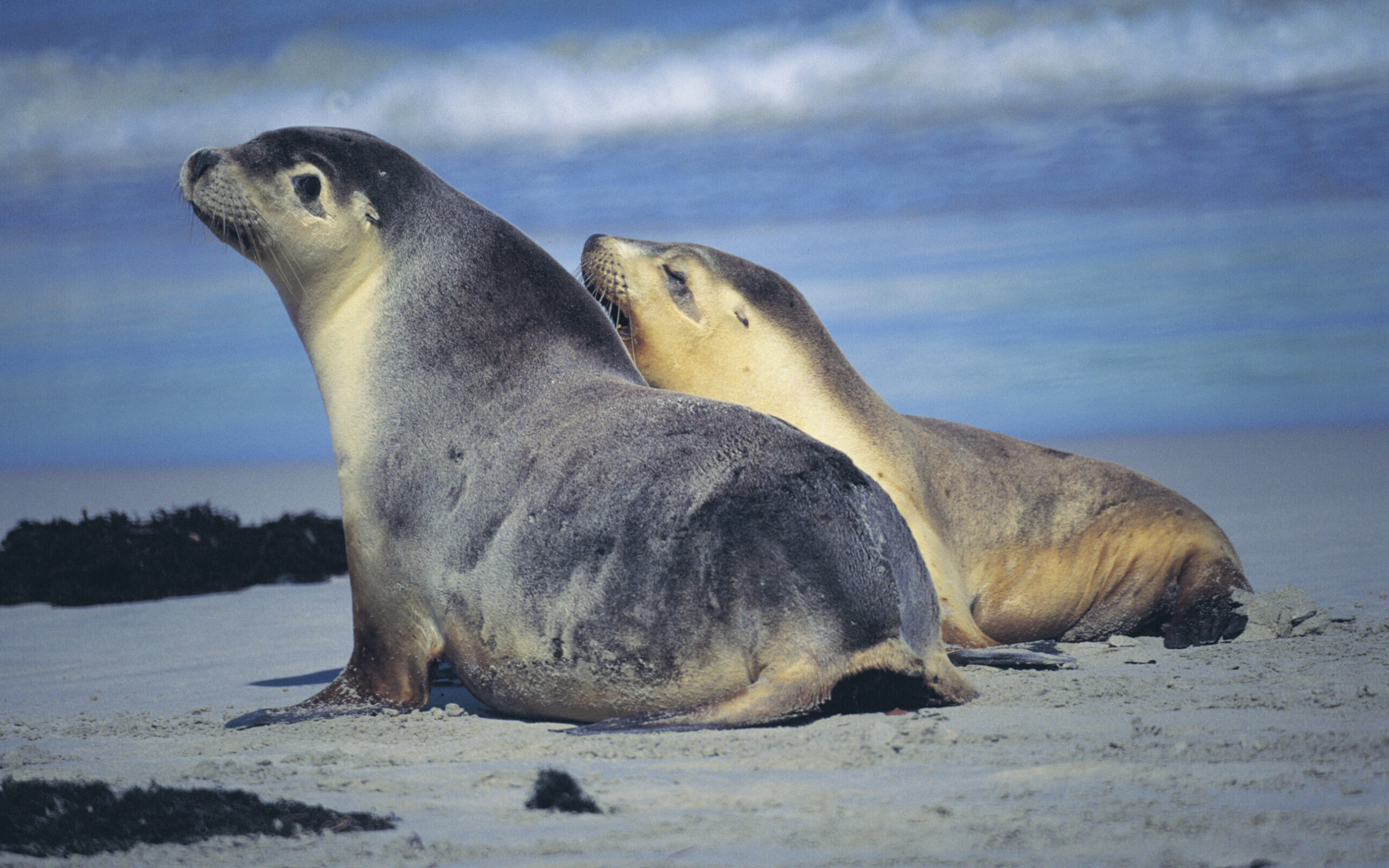
When most people think of Australia’s iconic wildlife, kangaroos, koalas, and perhaps even great white sharks come to mind. But lurking along the rugged southern and western coastlines of this vast continent is a truly unique and somewhat mysterious marine mammal: the Australian Sea Lion (Neophoca cinerea).
Unlike their more numerous and boisterous cousins in other parts of the world, the Australian Sea Lion is considered one of the rarest sea lion species globally, found exclusively in the waters off South Australia and Western Australia. Their story is one of fascinating biology and the ongoing efforts to protect a truly special endemic species.
A Distinct Look and Unhurried Life
Australian Sea Lions possess several features that set them apart. They generally have a shorter, broader snout compared to other sea lions, giving them a more “dog-like” face. Their coat color varies significantly; males are typically dark brown with a lighter, often yellowish crown, while females are a beautiful silver-grey on their backs with a cream or yellowish belly. Pups are born with a dark, chocolate-brown fur that gradually lightens with age.
Males are considerably larger than females, weighing up to 660 pounds and reaching lengths of over 8 feet, while females average around 220 pounds and 6 feet in length.
Perhaps one of their most distinctive biological traits is their unusual and asynchronous breeding cycle. Unlike most pinnipeds that breed annually and at predictable times, Australian Sea Lions have a breeding cycle that can last an astonishing 17-18 months, with colonies breeding at different times throughout the year. This makes management and conservation efforts more complex, as it’s not a simple case of protecting all colonies during a single, predictable pupping season.
Coastal Foragers and Deep Divers
Australian Sea Lions are predominantly coastal foragers, staying relatively close to their breeding and haul-out sites. They feed on a diverse diet that includes fish, squid, octopus, cuttlefish, and even small sharks and rays. While they often hunt in shallower waters, research has shown they are capable of impressive dives, sometimes reaching depths of over 300 feet in search of prey.
They haul out on sandy beaches, rocky platforms, and offshore islands, often returning to the same sites year after year. These sites are vital for resting, molting, and raising their young.
Where to Find (and Respect) Them
Given their restricted range, spotting an Australian Sea Lion requires a trip to the right part of Australia. Some of the key locations include:
- South Australia: The Eyre Peninsula and Kangaroo Island are prime areas. Seal Bay on Kangaroo Island offers guided tours to observe a wild colony up close (with strict rules to protect the animals).
- Western Australia: Various islands and remote stretches of coastline, particularly around the Recherche Archipelago and Shoalwater Islands Marine Park.
Remember that they are wild animals, and maintaining a respectful distance is crucial for their safety and yours.
A Species in Need of Protection
The Australian Sea Lion’s status is currently Endangered by the IUCN (International Union for Conservation of Nature). Their unique breeding cycle, combined with other threats, makes their recovery a slow and challenging process.
The primary threats they face include:
- Fisheries Interaction: Bycatch (accidental capture) in gillnet and trawl fisheries is a major concern, as these operations often overlap with the sea lions’ foraging grounds.
- Historical Hunting: Although hunting ceased decades ago, the slow reproductive rate means populations take a long time to recover.
- Habitat Disturbance: Increasing human activity, development, and tourism can disturb their sensitive breeding and resting sites.
- Climate Change: Potential impacts on prey availability and ocean conditions are ongoing concerns.
Dedicated conservation efforts are underway, including monitoring programs, research into their ecology, and implementing mitigation measures in fisheries. Protecting their critical habitat and reducing human-induced mortality are paramount to ensuring the long-term survival of this remarkable Australian native.
The Australian Sea Lion is a precious part of Australia’s natural heritage. Its rarity and unique biology make it a fascinating subject and a powerful emblem for marine conservation efforts in the region.
Keep exploring:
- A Deep Dive into the Wonderful World of Sea Lions
- Sea Lions vs Seals: Unraveling the Mystery of Pinnipeds
More photos below ↓







Disclaimer: This blog post is for edutainment purposes only and may not be entirely accurate.






